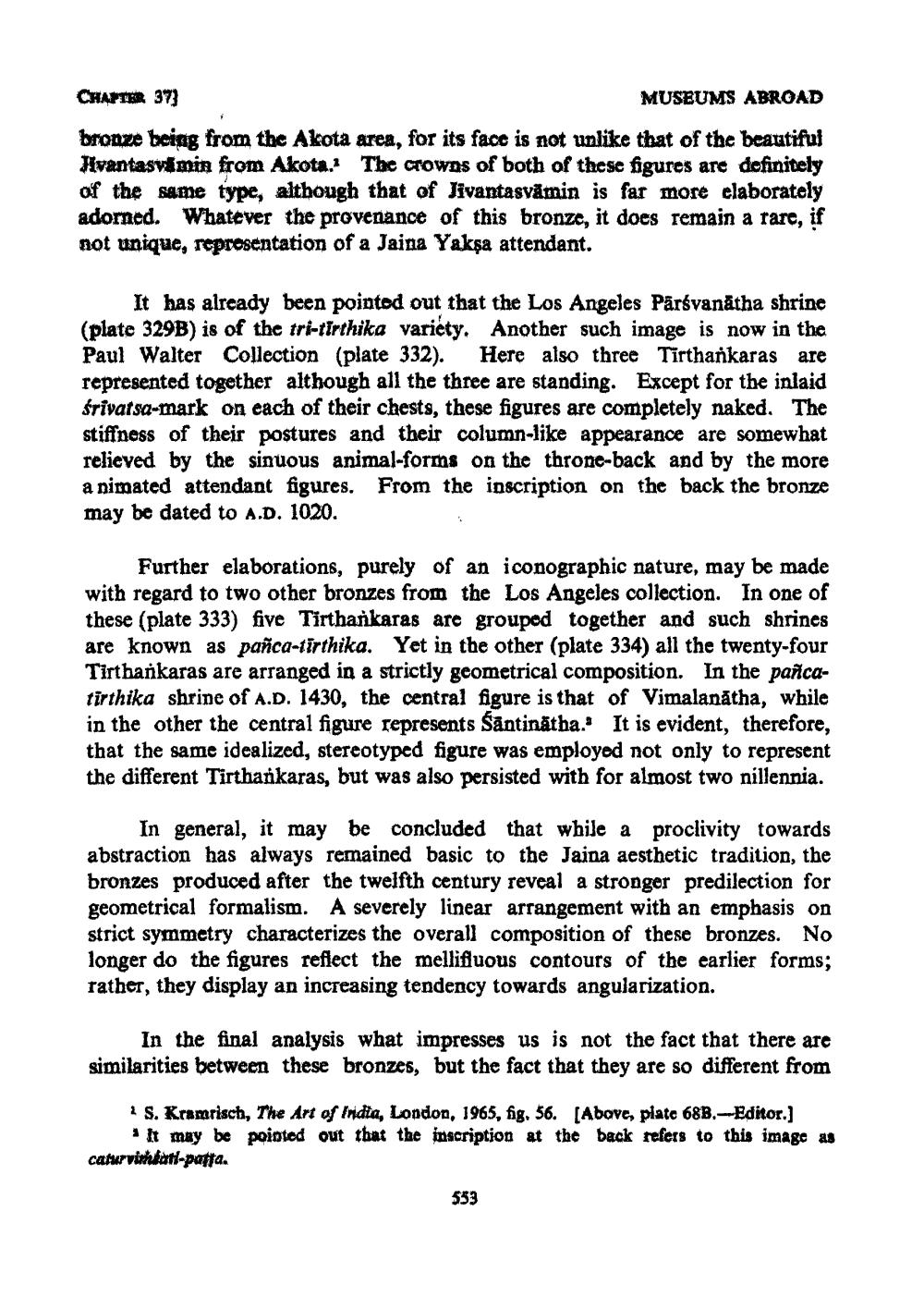________________
CHAPTER 373
MUSEUMS ABROAD
bronze being from the Akota area, for its face is not unlike that of the beautiful Hvantasvamin from Akota. The crowns of both of these figures are definitely of the same type, although that of Jivantasvämin is far more elaborately adorned. Whatever the provenance of this bronze, it does remain a rare, if not unique, representation of a Jaina Yaksa attendant.
It has already been pointed out that the Los Angeles Pārsvanatha shrine (plate 329B) is of the tri-tirthika variéty. Another such image is now in the Paul Walter Collection (plate 332). Here also three Tirthankaras are represented together although all the three are standing. Except for the inlaid Srivatsa-mark on each of their chests, these figures are completely naked. The stiffness of their postures and their column-like appearance are somewhat relieved by the sinuous animal-forms on the throne-back and by the more animated attendant figures. From the inscription on the back the bronze may be dated to A.D. 1020.
Further elaborations, purely of an iconographic nature, may be made with regard to two other bronzes from the Los Angeles collection. In one of these (plate 333) five Tirthankaras are grouped together and such shrines are known as pañca-tirthika. Yet in the other (plate 334) all the twenty-four Tirthankaras are arranged in a strictly geometrical composition. In the pancatirthika shrine of A.D. 1430, the central figure is that of Vimalanatha, while in the other the central figure represents Santinātha. It is evident, therefore, that the same idealized, stereotyped figure was employed not only to represent the different Tirthankaras, but was also persisted with for almost two nillennia.
In general, it may be concluded that while a proclivity towards abstraction has always remained basic to the Jaina aesthetic tradition, the bronzes produced after the twelfth century reveal a stronger predilection for geometrical formalism. A severely linear arrangement with an emphasis on strict symmetry characterizes the overall composition of these bronzes. No longer do the figures reflect the mellifluous contours of the earlier forms; rather, they display an increasing tendency towards angularization.
In the final analysis what impresses us is not the fact that there are similarities between these bronzes, but the fact that they are so different from
1 S. Kramrisch, The Art of India, London, 1965, fig. 56. [Above, plate 68B.-Editor.] It may be pointed out that the inscription at the back refers to this image as caturvilati-patta.
553




